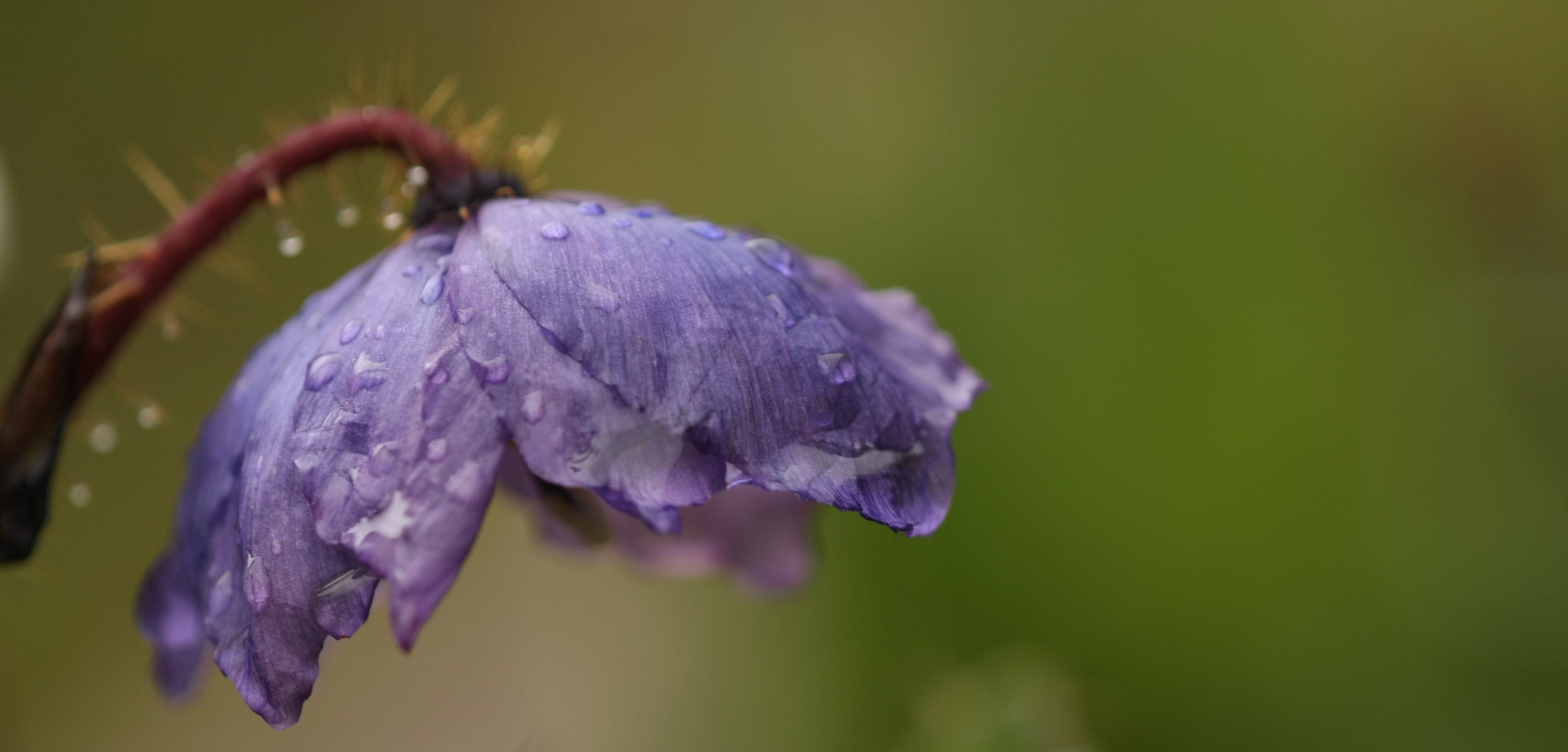Species diversity of Bhutan
Vascular plants
The country’s diverse ecosystems and eco-floristic zones harbour a rich array of vascular plants. The Flora of Bhutan records more than 5,600 species of seed plants out of which approximately 94% are native species and many are currently endemic to Bhutan. The Bhutanese flora is also rich in plant species with enormous commercial value and scientific intrigue. More than 200 plant species are known to be used for the formulation of various kinds of traditional medicines. Local healers also are known to use more than 160 species of plants as recorded in the National Traditional Knowledge database housed within the NBC. Currently, around 411 species of Pteridophytes (Ferns and allies) in 27 families are recorded from the country.
Non-vascular plants
Although there are many species of non-vascular plants such as mosses, liverworts, and hornworts, there is no detailed inventory of this plant group. As per Long, 1994, only 282 species under 156 genera of Bryophytes are recorded from Bhutan.
Fungi
In terms of fungal diversity in the country, currently, about 350 species have been identified and recorded, although the number could be much higher once a complete survey is carried out and species identity determined. The current number is based on a partial inventory carried in the country and only of those species whose identity is confirmed. Out of this, about 53 are edible mushroom species. Many of these edible mushrooms are local delicacies and contribute to the livelihoods and nutrition of the rural poor (Mata et al., 2010).
Insect fungi
The diversity and complexity of the associations of fungi and insects are poorly understood worldwide and more so in Bhutan. However, even with the limited studies on this group of organisms, more than 100 species are currently recorded from Bhutan and several species are suspected to be new to science (Mata et al., 2010).
Lichens and lichenicolous fungus
Lichens are a conspicuous element of biodiversity in Bhutan. However, very few studies are undertaken in this group. Currently, only about 287 lichens and lichenicolous fungi are known from Bhutan, although experts estimate the occurrence of more than 1,000 species. Most species are common to the Himalayas, except for some eastern North American species also found in Bhutan. For example, the rare Ropalospora chlorantha, so far only known from eastern North America is reported to occur in Bhutan. Lepraria nigrocincta is another species first reported in the Northern Hemisphere from Bhutan while Pyrrhospora bhutanensis is described as new to science (Aptroot and Feijen, 2002).
Mammals
129 species of mammals are known to occur in the country, including 26 globally threatened species. Bhutan is also known to be rich in wild felids, harbouring 11 of the 36 globally recorded species. A study conducted in Royal Manas National Park in 2012, in an area as small as 74 sq. km, recorded six felid species, which is about 16 percent of the global felid species confirming Bhutan as a hotspot for wild felids (Tempa et al., 2013).
Birds
Bhutan is recognized as a part of several globally important bird areas, such as Sino-Himalayan mountain forests, Indo-Burmese forests, Indo-Gangetic grasslands, South Asian arid habitats, and Tibetan plateau wetlands (BirdLife International 2014). This explains the rich bird diversity that Bhutan has within its small geographic area. Currently, around 736 species are recorded to be found in Bhutan out of which 30 are globally threatened. Of the four critically endangered species found in Bhutan, the White-bellied Heron is the most studied species with a population of 24 individuals out of the estimated global population of 50-200 birds.
Herpetofauna
In terms of herpetofauna, there are limited studies and documentation carried out in the country so far. Nevertheless compiling all the past records, Bhutan has 158 species of amphibians and reptiles recorded thus far (NBC, 2019).
Invertebrates
Invertebrates are one of the least studied groups in the country giving an incomplete picture of the diversity of this species-rich group. The information presented here is of those groups, which have been studied to some extent. Although, Bhutan is reportedly expected to have 800 to 900 species of butterfly (van der Poel and Wangchuk, 2007) currently, 750 species of butterflies are recorded in Bhutan. Odonates have been studied to some extent. Currently, 94 species of Odonata are recorded. Megalestes gyalsey, a new species of dragonfly named in honour of the Crown Prince of Bhutan, His Royal Highness Gyalsey Jigme Namgyel Wangchuck of Bhutan, and called the Gyalsey Emerald Spreadwing discovered from Trongsa was described as a new to science in 2017.
Fish fauna
130 species were reported from Bhutan. In 2013 two new species, Garra bimaculacauda from central Bhutan and Garra parastenorhynchus were described from southern Bhutan. A new species of torrent catfish Parachiloglanis bhutanensis was discovered in 2013 at an elevation of 2211 masl in Trashigang, and is the first endemic fish species scientifically described from Bhutan in 2014. Another five new species of catfishes; Creteuchiloglanis bumdelingensis, Exostoma mangdechhuensis, Parachiloglanis benjii, P. dangmechhuensis, and P. drukyulensis were described from Bhutan in 2018 by Thoni & Gurung.
Crops
As a predominantly agricultural country, Bhutan is rich in agricultural diversity. More than 100 species of agricultural crops are known to occur in the country. As a consequence of adaptation to microenvironments created by altitudinal and climatic variations, there are numerous landraces of crop species. NBC has so far recorded 384 landraces of rice, 105 of maize, 36 of wheat, 10 of sweet buckwheat, 11 of bitter buckwheat, 32 of barley, 22 of amaranth, and 36 of millets. Several of the varieties and landraces represent an adaptation to some of the highest agricultural lands in the world, with cultivation in the alpine agroecological zone extending up to 4,600 masl. While wheat is not an indigenous crop, varieties grown around Laya at 3,839 masl, are adapted to higher altitudes and colder climatic conditions than wheat varieties in other parts of the world. Similarly, maize and barley have undergone a natural process of breeding and selection to evolve into high-elevation varieties.
In terms of Crop Wild Relatives (CWR), around 230 species belonging to 120 genera in 51 families are expected to occur in Bhutan (Tamang, 2003). For example, Fagopyrum dibotrys, a putative wild relative of buckwheat, and Setaria viridis of Foxtail millet are reported from Bhutan. Further, at least three wild relatives of rice Oryza minuta and Oryza rufipogon are reported in the Flora of Bhutan, while Oryza officinalis was recorded from Southern Bhutan in 2012 (NBC, 2013). In terms of horticultural crops, while the country is believed to have rich diversity, there have been no detailed assessments carried out so far.
Livestock
At the species level, the livestock diversity of Bhutan is not different from those commonly occurring elsewhere in the Himalayas. However, there are many livestock breeds with marked genetic differences. For example, among the cattle breeds, Nublang, a traditional cattle breed of Bhutan believed to have originated in Sangbay Gewog of Haa, is genetically distinct from any other cattle breeds (Tshering and Rai, 2008). Another important animal genetic resource is the Mithun, a descendant of Gaur, which originated in Northeast India but has been bred in Bhutan since the 17th century. Mithuns are important due to the unique tradition of crossbreeding Mithun (male) with Nublang (female) to produce Jatsa and Jatsham, which are superior compared to either of the parent breeds. Similarly, yaks in Bhutan have distinct genetic differences between the population in Eastern and Western Bhutan.
Horse breeds found in the country are also considered to be unique. These breeds are Yuta, Boeta, Merak-Saktenpa, and Jata. Bhutanese sheep have been genetically investigated and classified into three types, namely Jakar, Sipsu, and Sakten types. In particular, the Jakar type is unique to central Bhutan and is highly endangered as farmers are giving up sheep husbandry since it is no longer economically viable. Traditional Poultry breeds are classified into nine types with the popular Yubja Naap, Belochem, and Bailetey featuring amongst them.

